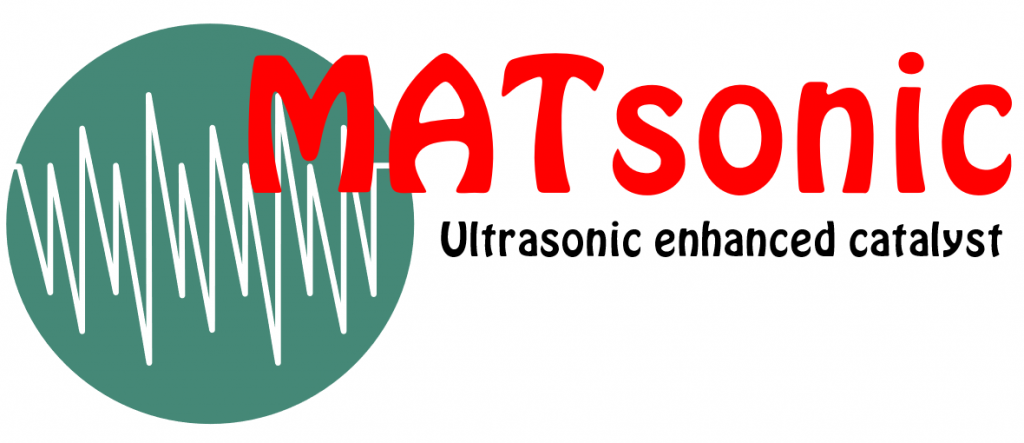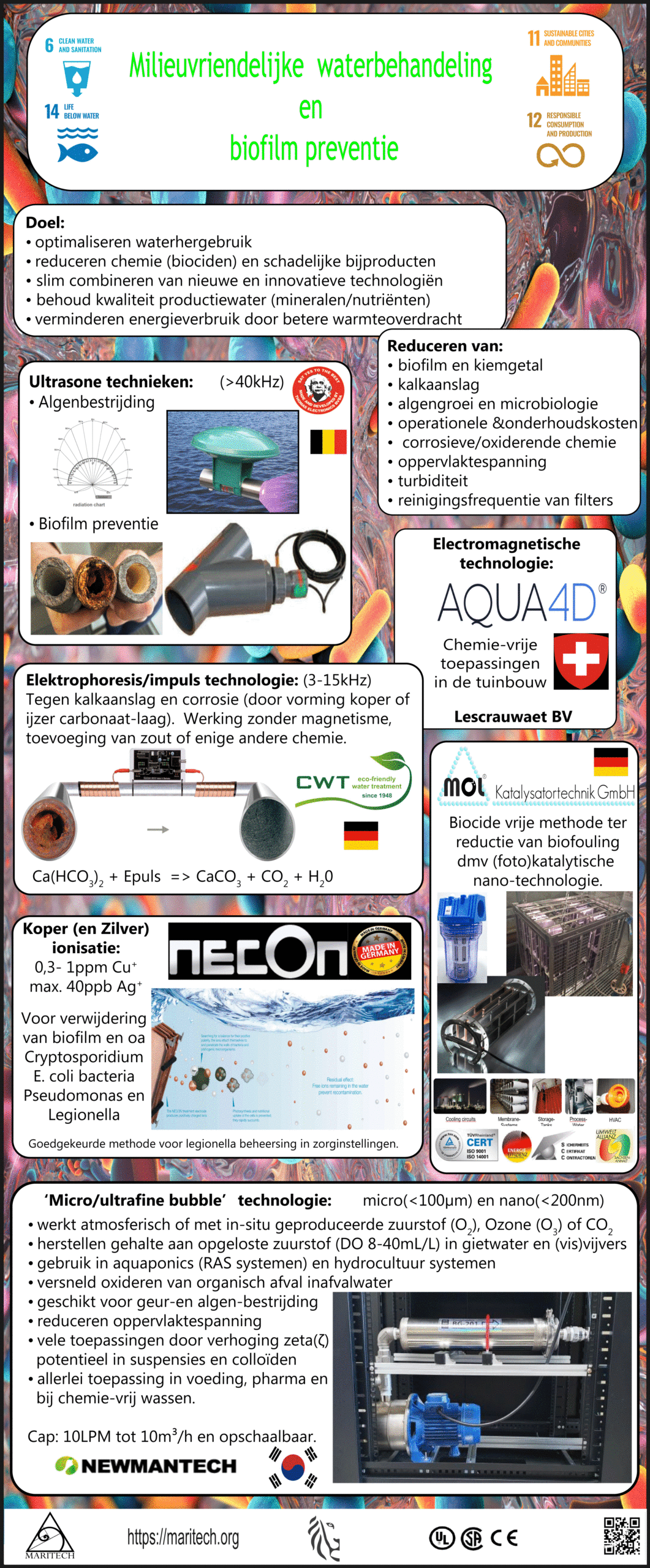Combination of low power ultrasound technology and Catalysis for water treatment and biofilm prevention.
“This combination, sold under the name MATsonic, offers an innovative and energy-efficient approach to water treatment and biofilm prevention. This synergistic method can enhance the production of reactive oxygen species (ROS), including hydroxyl radicals (•OH), while creating microbubbles and simultaneously suppressing biofilm formation.”

🔬 How Do These Technologies Work Together?
1. Ultrasonic Cavitation (≤40W)
Ultrasonic waves cause cavitation, where microscopic gas bubbles form and implode. This leads to:
Local temperature spikes (~5000 K)
High pressure (~1000 bar)
Creation of shockwaves and microjets, which causes mechanical disruption of biofilms and cell membranes
Release of hydroxyl radicals (•OH) and other ROS
- Help break down pollutants
Reaction:
H₂O → •OH + H•
A low power level (≤40W) prevents excessive energy consumption and minimizes equipment wear, while still generating sufficient cavitation to disrupt biofilms.
2. MOL®KAT Solid-State Catalysis
MOL®KAT catalysts helps to restore the equilibrium between molecular water and bulkwater. The result is a better solvation effect and creation of microbubbles that have a cleaning effect over long distances. In combination with O₂, O₃ or H₂O₂, they accelerate oxidation processes without being consumed.
Reaction mechanisms (examples):
✔ With H₂O₂:
MOL®KAT + H₂O₂ → •OH + OH⁻
✔ With O₃:
MOL®KAT + O₃ + H₂O → •OH + O₂
✔ With air or oxygen:
MOL®KAT + O₂ + H₂O → •OH + H⁺
This catalysis ensures a continuous supply of hydroxyl radicals without the need for external energy input.
🚀 Synergy: Why Do They Work Well Together?
The combination of ultrasonic waves and MOL®KAT catalysis delivers a dual attack on pollution and biofilm formation:
Increased production of hydroxyl radicals (•OH)
Mechanical disruption of biofilms
Lower energy and chemical consumption
Ultrasound keeps the catalyst surface free from fouling
In some case, the addition of hydrogen peroxide at a concentration of <200ppm is used. By the BPR/ECHA legisltion this is not considered to a biocidal action!
This means the system can still be described as biocide-free.
| Technology | Mechanism | Advantage |
|---|---|---|
| Ultrasound (≤40W) | Cavitation → •OH production & biofilm disruption | Low energy use, no chemicals required |
| MOL®KAT catalysis | Heterogeneous catalysis → continuous •OH production | No catalyst consumption, oxidation without chemicals |
| H₂O₂ addition | Catalytic decomposition → increased •OH production | No toxic byproducts, fully biodegradable |
| Combined | Synergistic oxidation | Maximum efficiency, sustainable and safe water purification |
Remark:
The symbols ⁻OH (usually written as OH⁻) and ˙OH (written as •OH) refer to two very different chemical species involving the hydroxyl group!
OH⁻ (Hydroxide ion)
- Type: Ion (negatively charged)
- Structure: One oxygen atom bonded to a hydrogen atom, with an extra electron (negative charge).
- Charge: −1
- Stability: Stable in water
- Reactivity: Basic (strong base), common in alkaline solutions
- Example: Found in sodium hydroxide (NaOH), potassium hydroxide (KOH)
. •OH (Hydroxyl radical)
- Type: Radical (neutral species with an unpaired electron)
- Structure: One oxygen atom bonded to a hydrogen atom, but one of the electrons is unpaired (hence the dot)
- Charge: 0 (neutral)
- Stability: Very unstable and highly reactive
- Reactivity: Extremely reactive – it attacks organic compounds, DNA, etc.
- Example: Formed during water radiolysis or advanced oxidation processes

